Alexandre Zouaoui
Thoth
MLXP: A framework for conducting replicable Machine Learning eXperiments in Python
Feb 21, 2024



Abstract:Replicability in machine learning (ML) research is increasingly concerning due to the utilization of complex non-deterministic algorithms and the dependence on numerous hyper-parameter choices, such as model architecture and training datasets. Ensuring reproducible and replicable results is crucial for advancing the field, yet often requires significant technical effort to conduct systematic and well-organized experiments that yield robust conclusions. Several tools have been developed to facilitate experiment management and enhance reproducibility; however, they often introduce complexity that hinders adoption within the research community, despite being well-handled in industrial settings. To address the challenge of low adoption, we propose MLXP, an open-source, simple, and lightweight experiment management tool based on Python, available at https://github.com/inria-thoth/mlxp . MLXP streamlines the experimental process with minimal practitioner overhead while ensuring a high level of reproducibility.
Fast Semi-supervised Unmixing using Non-convex Optimization
Jan 23, 2024Abstract:In this paper, we introduce a novel linear model tailored for semisupervised/library-based unmixing. Our model incorporates considerations for library mismatch while enabling the enforcement of the abundance sum-to-one constraint (ASC). Unlike conventional sparse unmixing methods, this model involves nonconvex optimization, presenting significant computational challenges. We demonstrate the efficacy of Alternating Methods of Multipliers (ADMM) in cyclically solving these intricate problems. We propose two semisupervised unmixing approaches, each relying on distinct priors applied to the new model in addition to the ASC: sparsity prior and convexity constraint. Our experimental results validate that enforcing the convexity constraint outperforms the sparsity prior for the endmember library. These results are corroborated across three simulated datasets (accounting for spectral variability and varying pixel purity levels) and the Cuprite dataset. Additionally, our comparison with conventional sparse unmixing methods showcases considerable advantages of our proposed model, which entails nonconvex optimization. Notably, our implementations of the proposed algorithms-fast semisupervised unmixing (FaSUn) and sparse unmixing using soft-shrinkage (SUnS)-prove considerably more efficient than traditional sparse unmixing methods. SUnS and FaSUn were implemented using PyTorch and provided in a dedicated Python package called Fast Semisupervised Unmixing (FUnmix), which is open-source and available at https://github.com/BehnoodRasti/FUnmix
Image Processing and Machine Learning for Hyperspectral Unmixing: An Overview and the HySUPP Python Package
Aug 18, 2023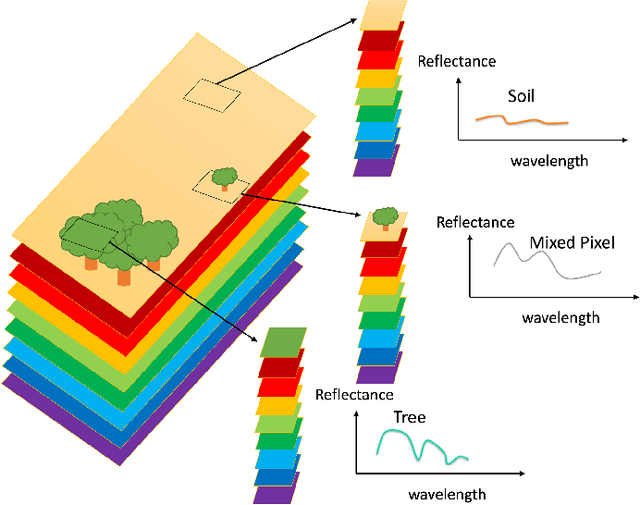

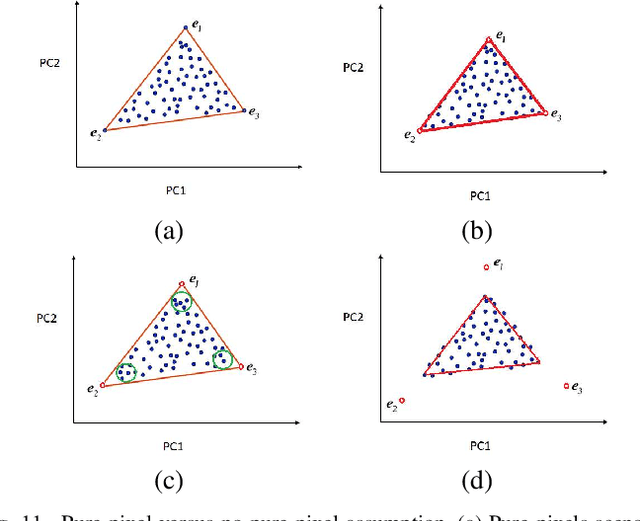
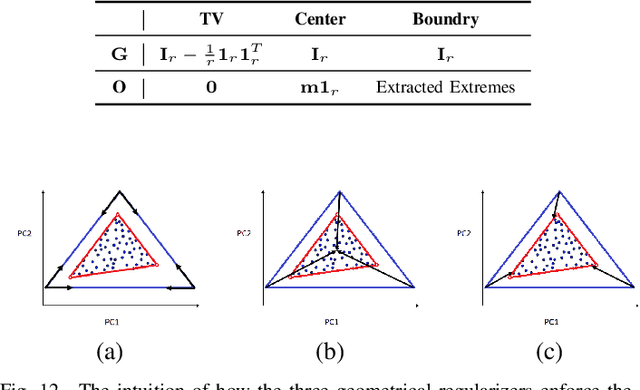
Abstract:Spectral pixels are often a mixture of the pure spectra of the materials, called endmembers, due to the low spatial resolution of hyperspectral sensors, double scattering, and intimate mixtures of materials in the scenes. Unmixing estimates the fractional abundances of the endmembers within the pixel. Depending on the prior knowledge of endmembers, linear unmixing can be divided into three main groups: supervised, semi-supervised, and unsupervised (blind) linear unmixing. Advances in Image processing and machine learning substantially affected unmixing. This paper provides an overview of advanced and conventional unmixing approaches. Additionally, we draw a critical comparison between advanced and conventional techniques from the three categories. We compare the performance of the unmixing techniques on three simulated and two real datasets. The experimental results reveal the advantages of different unmixing categories for different unmixing scenarios. Moreover, we provide an open-source Python-based package available at https://github.com/BehnoodRasti/HySUPP to reproduce the results.
SUnAA: Sparse Unmixing using Archetypal Analysis
Aug 09, 2023Abstract:This paper introduces a new sparse unmixing technique using archetypal analysis (SUnAA). First, we design a new model based on archetypal analysis. We assume that the endmembers of interest are a convex combination of endmembers provided by a spectral library and that the number of endmembers of interest is known. Then, we propose a minimization problem. Unlike most conventional sparse unmixing methods, here the minimization problem is non-convex. We minimize the optimization objective iteratively using an active set algorithm. Our method is robust to the initialization and only requires the number of endmembers of interest. SUnAA is evaluated using two simulated datasets for which results confirm its better performance over other conventional and advanced techniques in terms of signal-to-reconstruction error. SUnAA is also applied to Cuprite dataset and the results are compared visually with the available geological map provided for this dataset. The qualitative assessment demonstrates the successful estimation of the minerals abundances and significantly improves the detection of dominant minerals compared to the conventional regression-based sparse unmixing methods. The Python implementation of SUnAA can be found at: https://github.com/BehnoodRasti/SUnAA.
Entropic Descent Archetypal Analysis for Blind Hyperspectral Unmixing
Sep 26, 2022

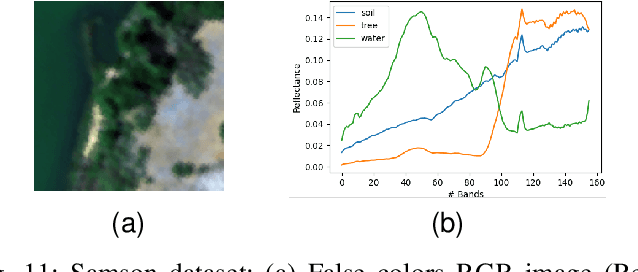
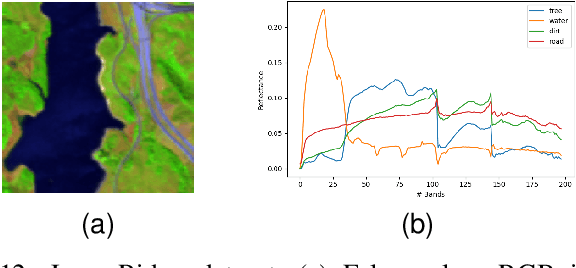
Abstract:In this paper, we introduce a new algorithm based on archetypal analysis for blind hyperspectral unmixing, assuming linear mixing of endmembers. Archetypal analysis is a natural formulation for this task. This method does not require the presence of pure pixels (i.e., pixels containing a single material) but instead represents endmembers as convex combinations of a few pixels present in the original hyperspectral image. Our approach leverages an entropic gradient descent strategy, which (i) provides better solutions for hyperspectral unmixing than traditional archetypal analysis algorithms, and (ii) leads to efficient GPU implementations. Since running a single instance of our algorithm is fast, we also propose an ensembling mechanism along with an appropriate model selection procedure that make our method robust to hyper-parameter choices while keeping the computational complexity reasonable. By using six standard real datasets, we show that our approach outperforms state-of-the-art matrix factorization and recent deep learning methods. We also provide an open-source PyTorch implementation: https://github.com/inria-thoth/EDAA.
A Trainable Spectral-Spatial Sparse Coding Model for Hyperspectral Image Restoration
Nov 18, 2021



Abstract:Hyperspectral imaging offers new perspectives for diverse applications, ranging from the monitoring of the environment using airborne or satellite remote sensing, precision farming, food safety, planetary exploration, or astrophysics. Unfortunately, the spectral diversity of information comes at the expense of various sources of degradation, and the lack of accurate ground-truth "clean" hyperspectral signals acquired on the spot makes restoration tasks challenging. In particular, training deep neural networks for restoration is difficult, in contrast to traditional RGB imaging problems where deep models tend to shine. In this paper, we advocate instead for a hybrid approach based on sparse coding principles that retains the interpretability of classical techniques encoding domain knowledge with handcrafted image priors, while allowing to train model parameters end-to-end without massive amounts of data. We show on various denoising benchmarks that our method is computationally efficient and significantly outperforms the state of the art.
 Add to Chrome
Add to Chrome Add to Firefox
Add to Firefox Add to Edge
Add to Edge